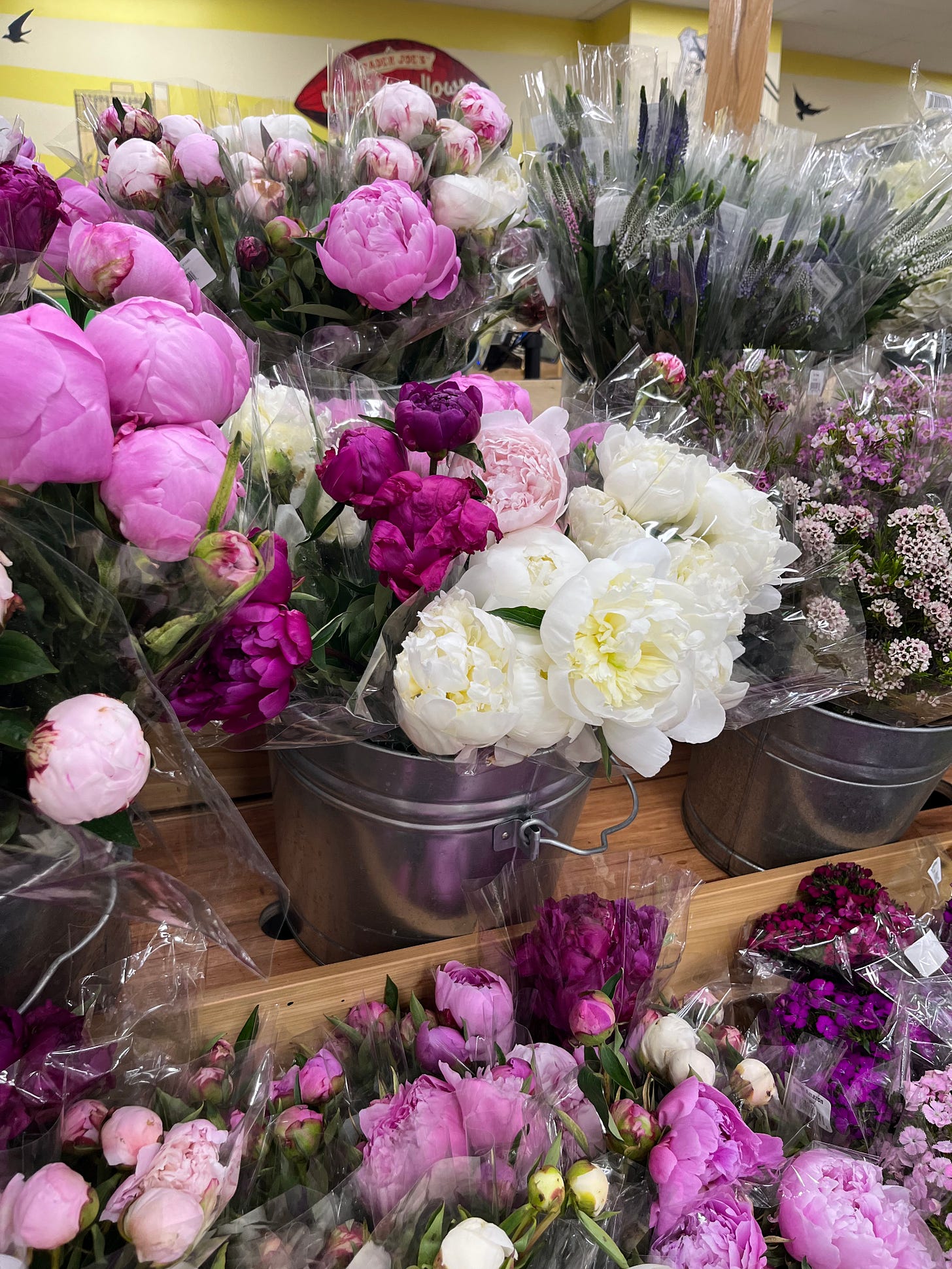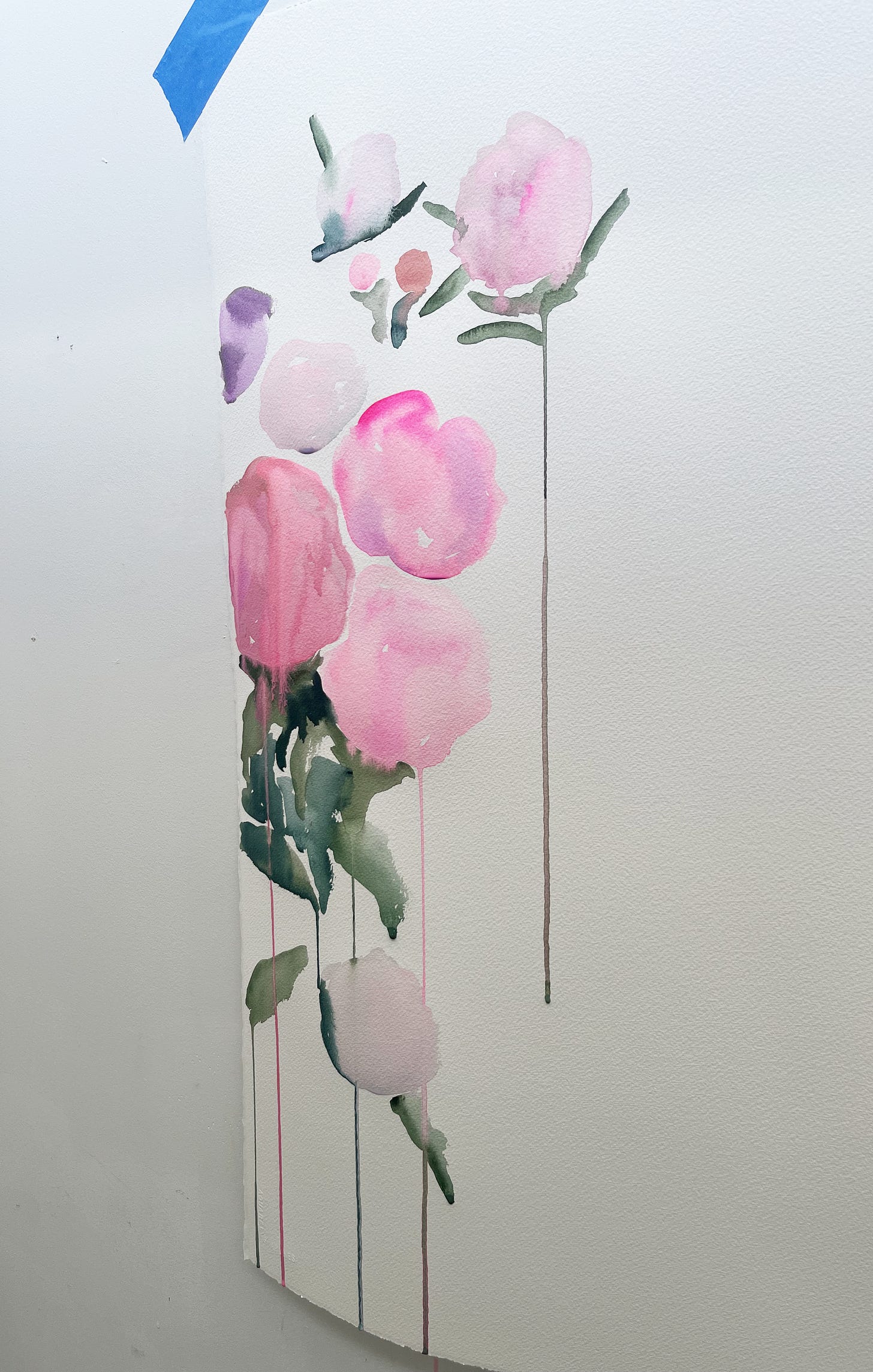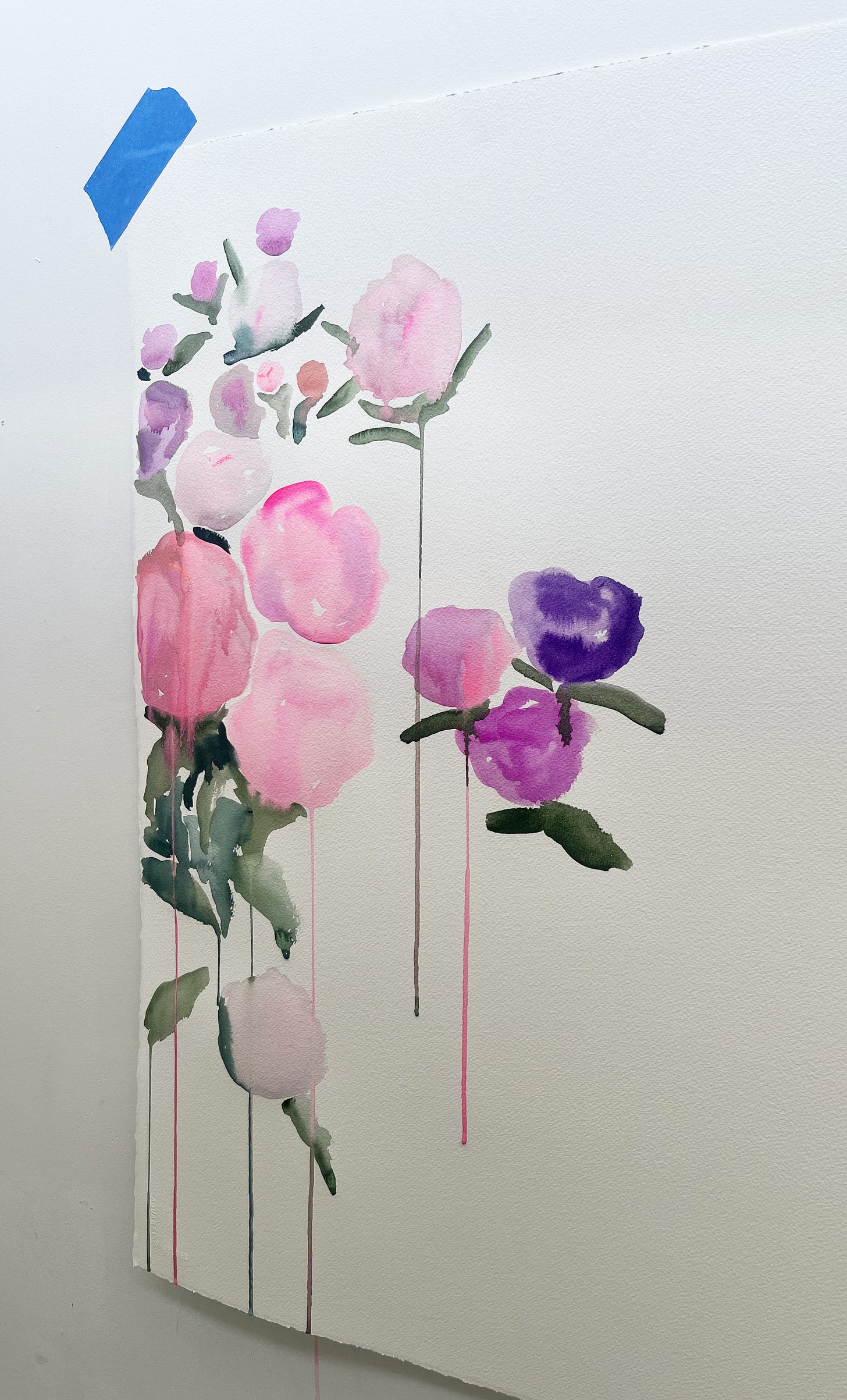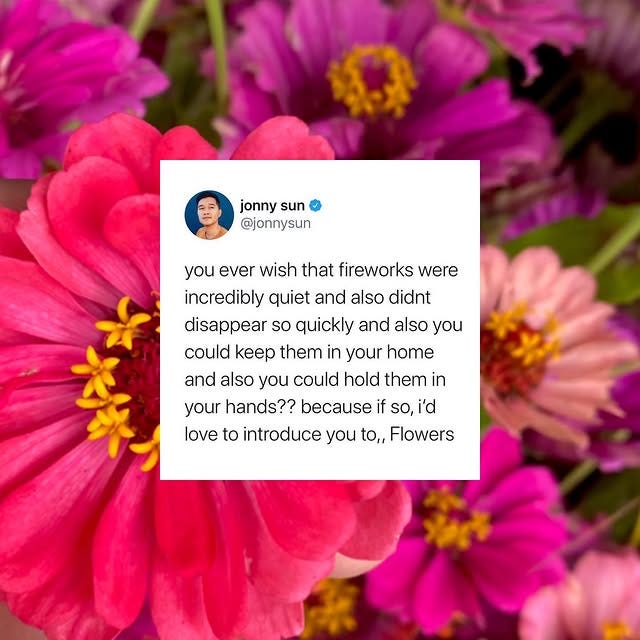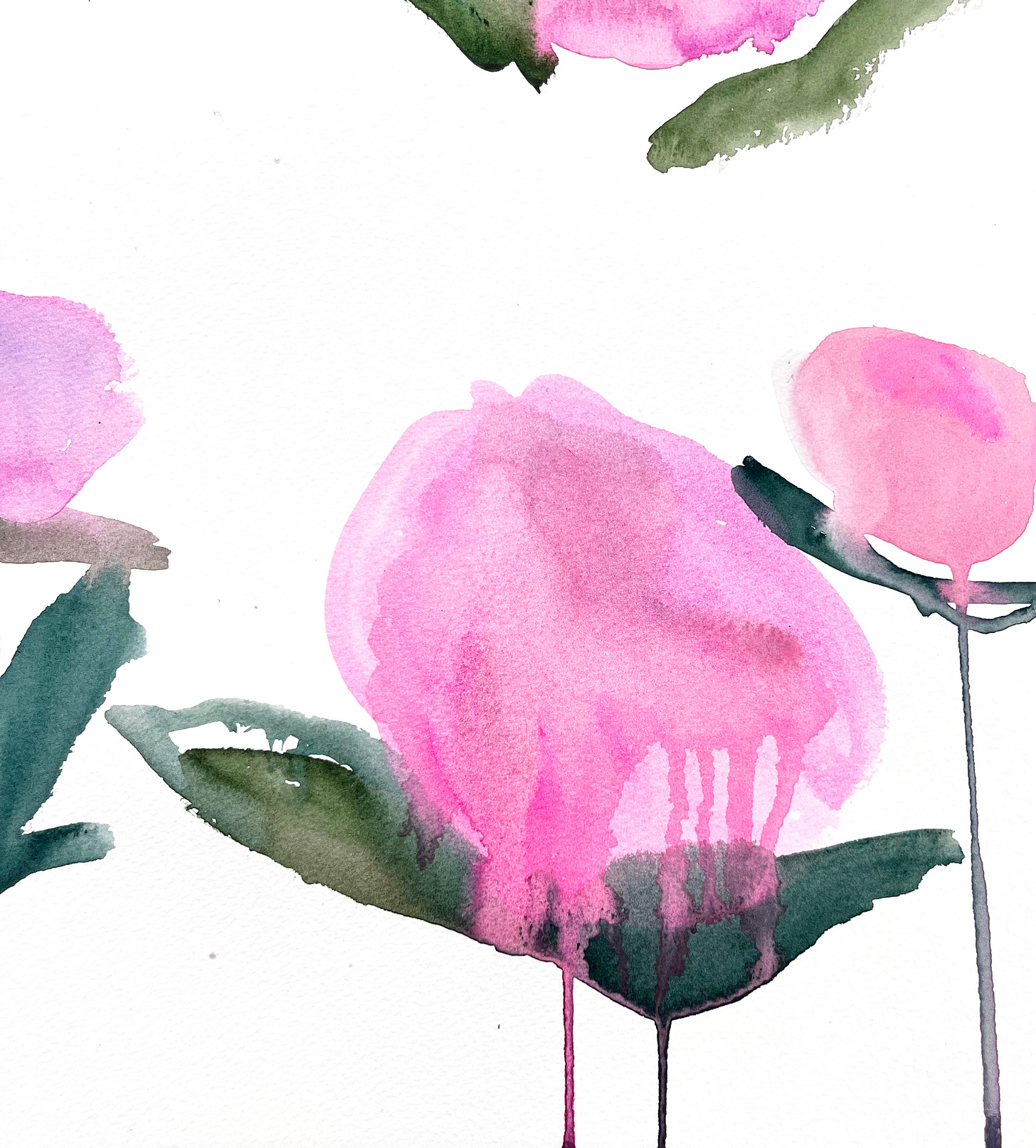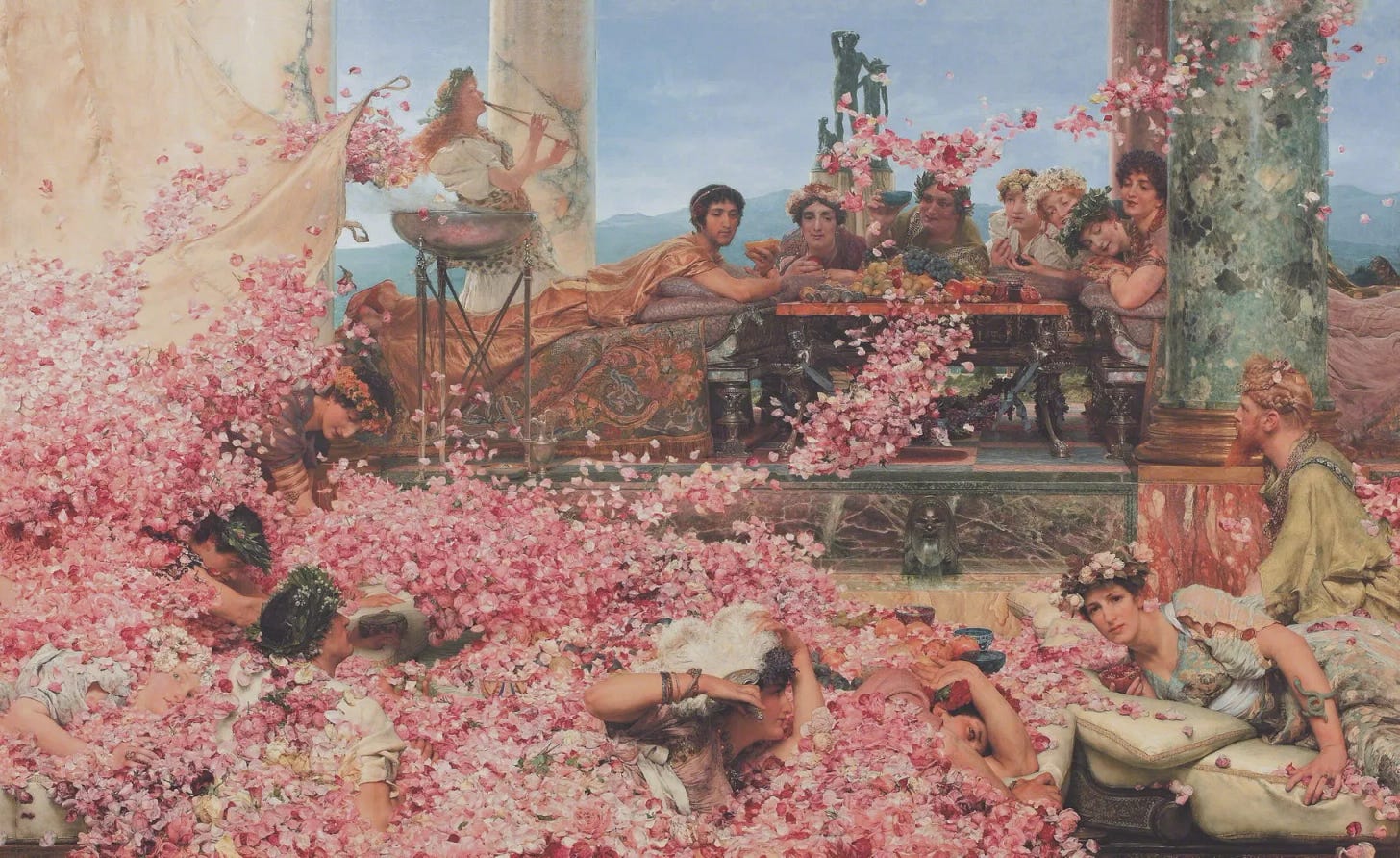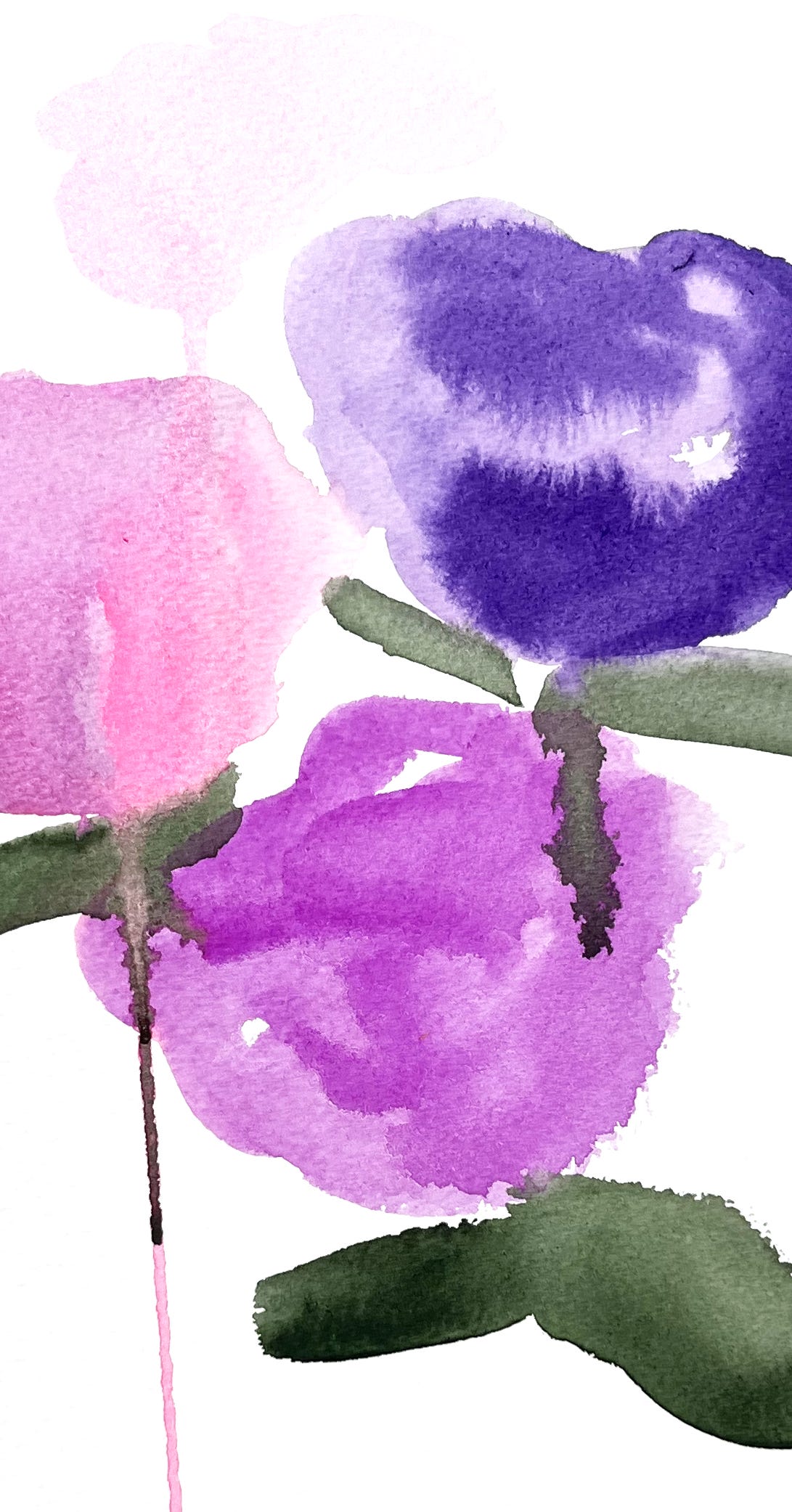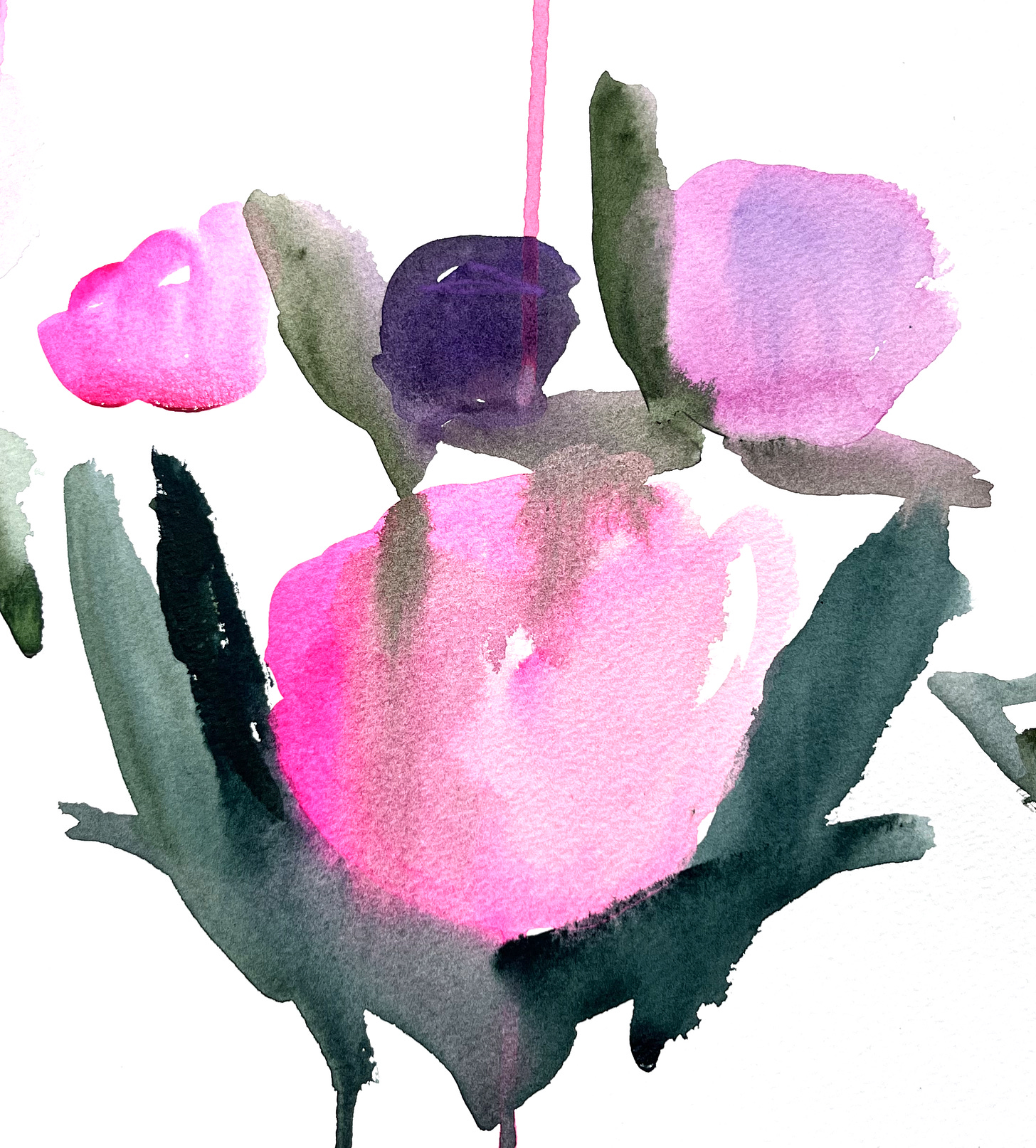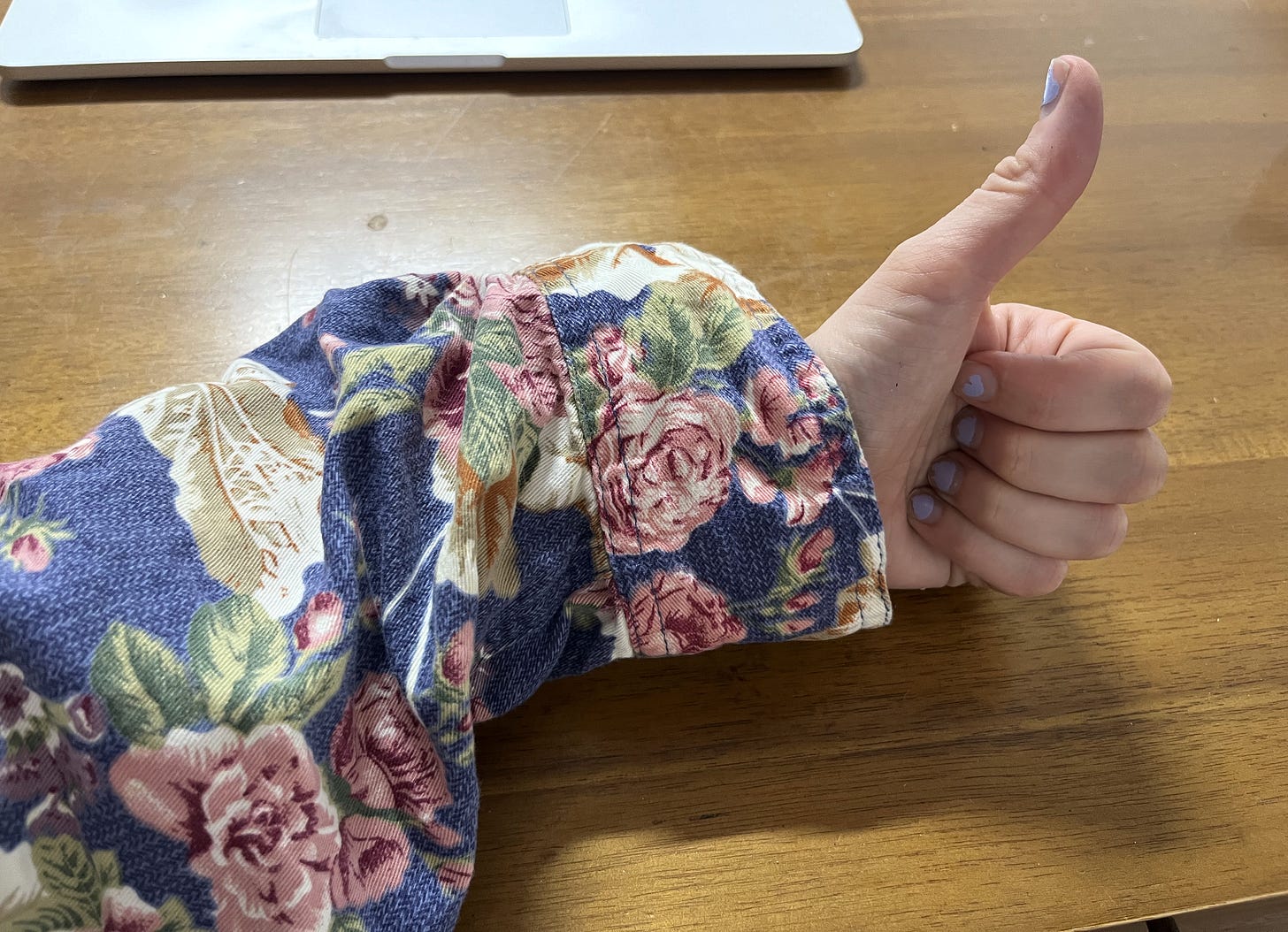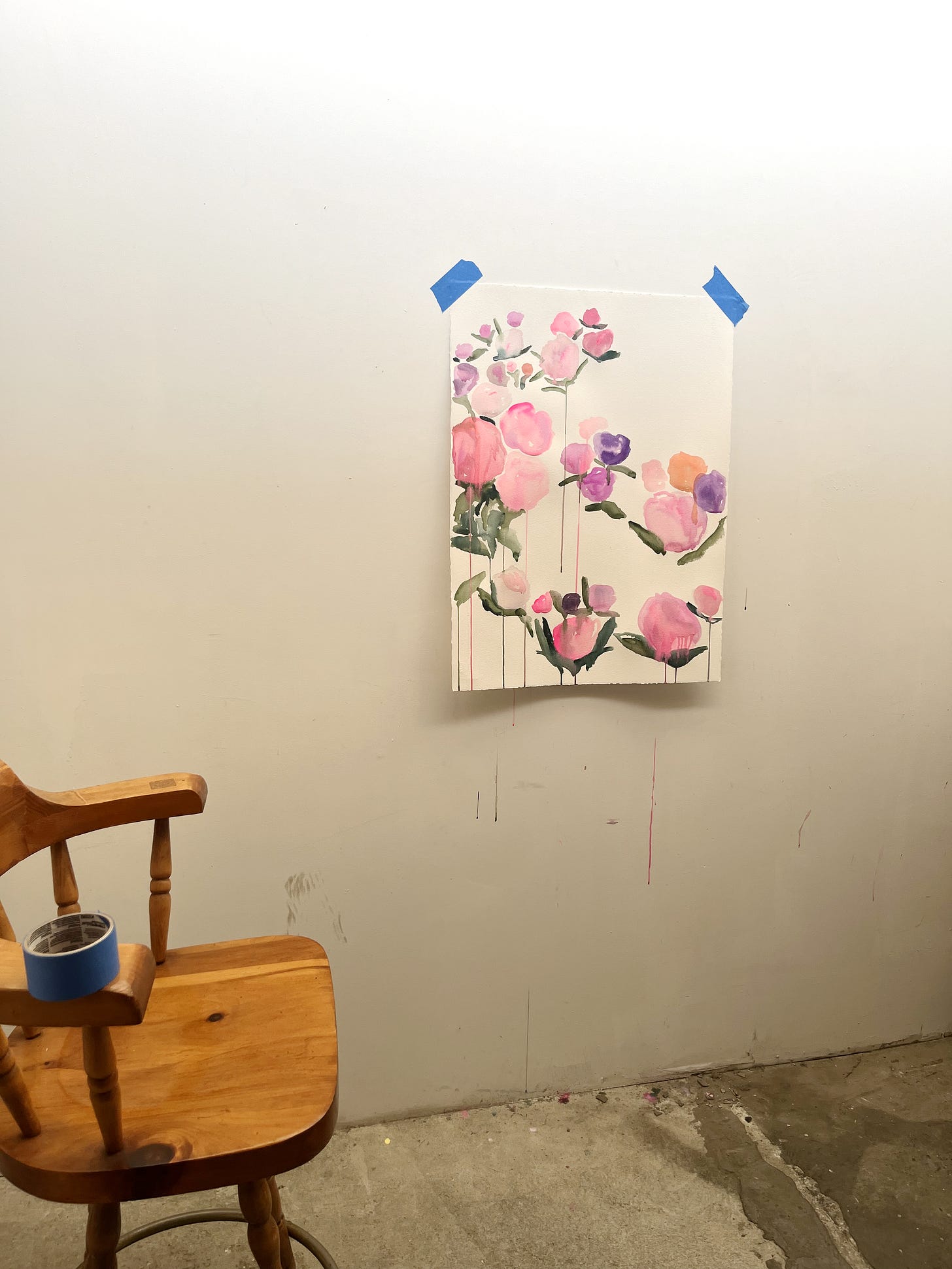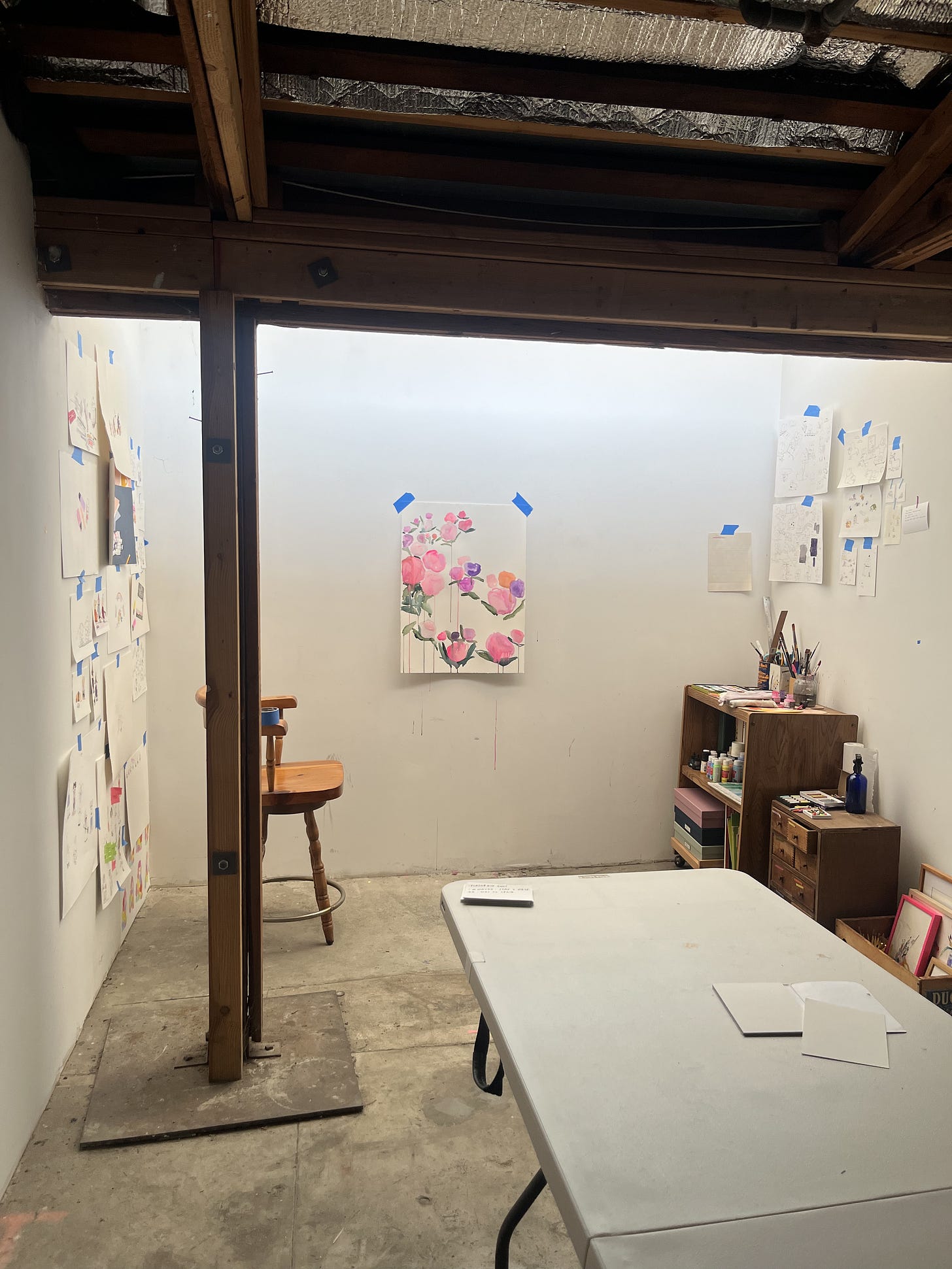I’ve been doing a lot of paintings of flowers recently, after stumbling upon some absolutely stunners at Trader Joe’s.
I come into my art studio on Friday mornings, pop on Suki Waterhouse (more specifically this song), get out my pink paints, and…
It is by far the most soothing thing I do in any given week.
Then I read an absolutely banging article about Rachel Ruysch in the Atlantic this weekend, within which was this quote:
In the gilded arena of Dutch stilleven, or “still life,” — what might be considered the lowest subgenre today is bloemstilleven, or “flower still life.” A seemingly decorative object (a flower) is represented in another decorative object (a painting), which rates as an even lesser decorative object—a flower painting.
Oh man.
My feelings didn’t have even a moment to be hurt though, because A. I am not a fine artist but someone simply with a credit card that allowed to me to purchase florescent ink and a giant paint brush from the Blue Rooster Art Supply store, and B. because Zachary Fine, the author, immediately refutes this claim, calling the perspective ‘pea-brained.’ Zachary continues:
Flower paintings are the most visually sumptuous portraits of nature’s most freakish and colorful sex organs. You are staring at a highly evolved specimen whose entire appearance is predicated on seducing living creatures—yourself included—to propagate its existence.
YES ZACHARY!
We all know fan art about flowers is magical. This tweet about flowers remains the best things to ever grace the internet:
Zachary refers to still life painting, and the portraiture of flowers, as the art of ‘arresting decay.’
Still life painting flourished in 17th-century Holland, becoming a symbol for the fleeting nature of existence.
These artworks, often called momento mori (“mementos of mortality”) or vanitas (“emptiness”), featured skulls to signify death, hourglasses to indicate the passing of time, and wilting flowers to symbolize the ephemeral. While vanitas scenes signaled the transient nature of all living things, bursting bouquets demonstrated art’s ability to freeze time and grant flowers eternal life.
I am glad to have given eternal life to the Williamsburg Trader Joe’s flower section circa June 2025.
If flower painting exists to remind us of the temporary nature of human existence, The Roses of Heliogabalus (1888), by Sir Lawrence Alma-Tadema really hammers that home.
The painting is said to recreate the tragic tale of Emperor Heliogabalus watching his guests suffocate under a shower of rose petals. I have nothing to add to this subject except holy shit.
It is said that Lawrence Alma-Tadema chose roses for the piece because of their symbology of corruption and death, and I of course googled the symbolism behind peonies (love, romance…) - but I’m definitely more interested in the Dutch ethos behind floral fan art, that of freezing time.
It is perhaps naive of me, but I wasn’t prepared for how much i’d think about time once I had a kid. Which is bloody constantly. Mostly because at least once a week a well-meaning stranger will look wistfully at us waddling around the park and say ‘you’ll never get this time back.’
The only thing this comment achieves in me is a feeling of raw panic that I should drop everything i’m doing and spend every waking second with my son, watching as his toes grow incrementally longer with every passing millisecond.
Perhaps by painting flowers I am casting a spell to freeze time so Max can stay a toddler for a little while longer, and I will also have time to make my fan art of my flowers. Because I really am a huge fan - I even bought the merch:
Thank you for reading and I will see you all soon!




